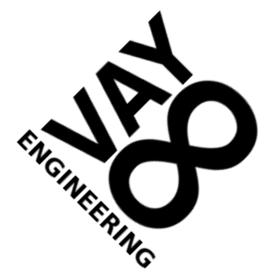This is an old revision of the document!
Seismometer Positioning System
Or maybe Seismic Local Positioning System? Or Seismic Triangulating Positioning System?
Using a system of seismometers (or perhaps accelerometers pressed into service as seismometers) that are networked together, it should be possible, with accurate clocks, to analyze input over, say, a 1-second rolling time window for frequency and amplitude to determine the source (epicenter) of the vibration. The time-window and frequency matching helps ensure the observed vibrations are from the same source. The venerable Fourier Transform will be used to determine frequencies and amplitudes.
Amplitude and timing are used to determine distance. Timing is the primary factor for determining distance–assume speed of sound traveling through soft wood (see table below). Amplitude can be used as a sanity check (e.g. the sensor with the greatest amplitude should be closest).
Ultimately, the system will need to be calibrated. The goal is to track foot steps, which should not vary in frequency too much and also follow common pathways to sensors–once the sensors are calibrated.
Speed of Sound in Various Materials
| Medium | Velocity | |
| (m/s) | (ft/s) | |
| Aluminum, shear - longitudinal wave | 3100 - 6400 | 10200 - 21060 |
| Beryllium | 12890 | 42530 |
| Brass | 3475 | 11400 |
| Brick | 4176 | 13700 |
| Concrete | 3200 - 3600 | 10500 - 11800 |
| Copper | 4600 | 15180 |
| Cork | 366 - 518 | 1200 - 1700 |
| Diamond | 12000 | 39400 |
| Glass | 3962 | 13000 |
| Glass, Pyrex | 5640 | 18500 |
| Gold | 3240 | 10630 |
| Granite | 5950 | 19635 |
| Hardwood | 3962 | 13000 |
| Iron | 5130 | 16830 |
| Lead | 1960 - 2160 | 6430 - 7087 |
| Lucite | 2680 | 8790 |
| Rubber, butyl | 1830 | 6039 |
| Rubber | 40 - 150 | 130 - 492 |
| Silver | 3650 | 12045 |
| Steel | 6100 | 20000 |
| Steel, stainless | 5790 | 19107 |
| Titanium | 6070 | 20031 |
| Wood (hard) | 3960 | 13000 |
| Wood | 3300 - 3600 | 10820 - 11810 |
Back of Envelope Math
My house is an L-shape, about 50ft by 50ft with a quadrant missing. Assume speed of sound in soft wood to be 3400 m/s (see above table).
If 3 sensors were placed at each corner of the house, the farthest distance a sensor ever could be would be about 70ft or 21 meters. It would take about 6ms for sound to reach from one sensor to the next farthest.
Thus, sub milisecond time resolution is required. The multiplicative inverse gives a rough idea of necessary sampling frequency (regards to Nyquist). 167hz. Given the ready availability of of 1000+ Mhz processors, capable of sampling at or around clock speed (E.G. a Raspberry Pi), fast enough sampling and processing to get satisfactory accuracy should not be a problem.
Desirable Output
Once calculations have been made, the data should be presented via some graphical interface (web based, or a TK canvas) that overlays the calculated vibration epicenters on a map of the house.
The net effect should be a graphical, real-time or near-real-time tracking of foot steps.
